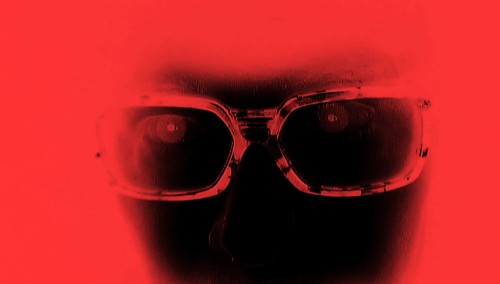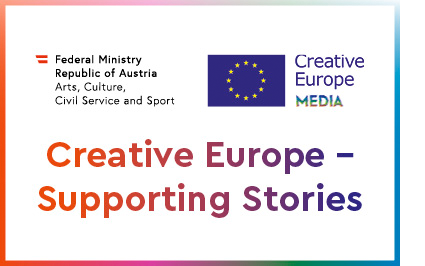On the occasion of his 75th birthday, CROSSING EUROPE pays tribute to the great Austrian avant-garde filmmaker with two multifaceted short film programs.
Furthermore, to illustrate the many facets of Dietmar Brehm’s artistic work and on the occasion of his 75th birthday, Lentos Kunstmuseum presents a special exhibition, curated by the artist himself. The exhibition will take place from 28 April – 29 May 2022 and will be opened on Thursday, 28 April at 6 pm. In addition, two paintings are on display as part of the exhibition "PRIZES AND TALENTS" in the OK Offenes Kulturhaus, ground floor (room next to the Moviemento box office). More information HERE.
Furthermore, to illustrate the many facets of Dietmar Brehm’s artistic work and on the occasion of his 75th birthday, Lentos Kunstmuseum presents a special exhibition, curated by the artist himself. The exhibition will take place from 28 April – 29 May 2022 and will be opened on Thursday, 28 April at 6 pm. In addition, two paintings are on display as part of the exhibition "PRIZES AND TALENTS" in the OK Offenes Kulturhaus, ground floor (room next to the Moviemento box office). More information HERE.

The faces and things: amorphous and melting; their relation to each other in the images: obscure and unclear; the atmosphere: ominous, out of this world, unreal. Over the years, the cinematic cosmos of the great Austrian avant-garde filmmaker Dietmar Brehm has repeatedly been compared to dreams, because everything in them is jammed against the notion of a continuum, a rationally experienceable world. Since the early 1970s the man from Linz and his works have taken us into flickering-pulsating parallel spaces and monochrome intermediate zones that could be referred to as instinctive worlds and other echo chambers of the psyche.
One encounters blurs and details of naked, copulating bodies, rubs against mask-like, mysterious faces, and wonders at shadowy glances and gestures that captivate our attention all the more. Instead of emotional investment, distance is the predominant feeling, a new wave-trained attitude of coolness. Still, the curiosity that is so inherent in the medium continues to be present at all times, though it is no longer attached to any single object, but as a condition of the cinematic apparatus remains fluid.
Ever since the beginning, Brehm’s films have roamed the foggy shores of genre cinema, where they gather flotsam and inspect it with a magnifying glass, so to speak, down to the smallest, sensual niches of the material. In most cases he combines found footage with self-made material; even completed works or elements taken from them are scoured through over and over. This consistently opens up unexpected angles for Brehm: After the digital “turn”, his own Super 8 and 16mm films have been scanned in video format, which in the case of TWISTED EYES (2009), for example, results in a deep sounding along the textures of the material. For CROSSING EUROPE, Brehm has personally curated two programs, one analog, the other digital, which combined offer more than just a cross-section of his oeuvre. They both programmatically start with a confrontation of the artist with himself. PRACTICE (1993) brings to mind the duel situation of a western, in which the filmmaker is now armed with a camera and the connecting point of the frames, the cut, becomes its actual site. A related irony can also be found in INSIDE – THE COLOUR VERSION (2017), when he uses the form of a pop art kaleidoscope flickering in green and red to guide us through his personal fetish world.
The films draw their tempting irritations from the fact that they push their representation into zones where we as observers lose ourselves among the approximate: There is just as little plot in THE MURDER MYSTERY (1992) as there is in HALLO MABUSE (2016), but in both there is a suggestive loading of the semantic remainders of film material. In the earlier work, he uses faces from a Bruce Lee movie and close-ups of sexual organs or the act itself to create an eruptive montage that fixes its gaze on the body parts only for as long as it takes the eye to orientate for a bit. MABUSE, which refers to Fritz Lang’s criminal mastermind, is no less effective in its work with ambiguities and sinister suggestions which eventually make the images themselves plunge into an abyss.
How Brehm’s (camera) eye continuously brings to light new surface effects in familiar moving images can already be seen in the analog film program. For HALCION (2007), for instance–which takes its title from the sleeping aid–he draws on films from his BLACK GARDEN cycle to, in a further treatment, remove their concreteness. The result feels like a billowing ocean made of pink silhouettes, into which one drowns and falls like into a vegetative state. In addition, this film is a beautiful example for how Brehm uses reduced means to achieve extremely powerful atmospheric results on the level of sound: Thunder and the crackle of flames can be found in several of his works.
Brehm’s handling of abstraction, colors, and acoustically evoked worlds of imagination have gained even more in significance in the digital works: In extremely decelerated negative images, the source material of TOKYO (2013), a Japanese Super 8 porn movie from the 1970s, becomes a mysterious ballet of bodies that are reduced to contrasts and seem almost like they are die cut. Just like in HYLO-VISION-PLUS – VERSION 1 (2022), where Brehm makes his own eye disease the motive for an image treatment, one has the feeling as though it is following the painterly thinking of Brehm, because the faces rhythmized to the guitars of This Heat possess a sweepingly graphical quality. Except for the fact that the cinematic direction pushes the eye toward the physical, the raw–an idea of punk surrounds this kind of cinema, the images of which pulsate beneath the skin like veins. (Dominik Kamalzadeh)






















